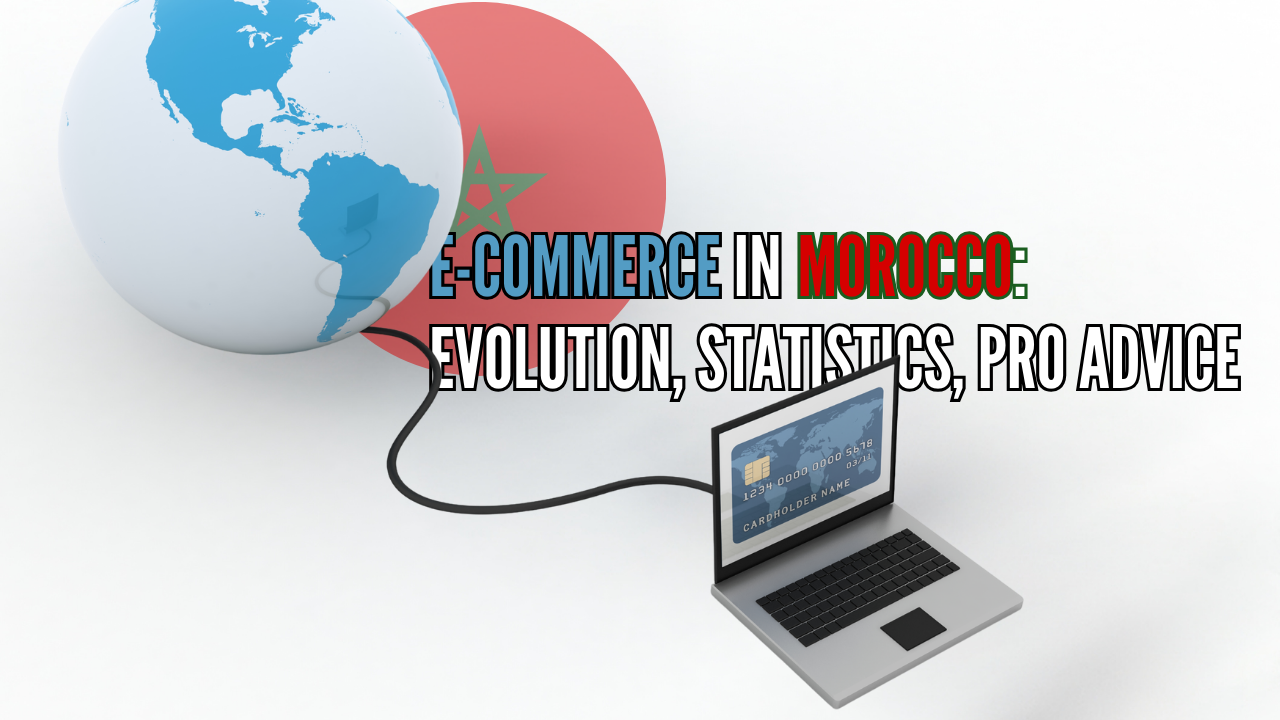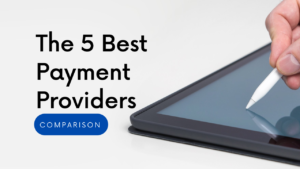
Over the past few years, e-commerce in Morocco has experienced significant evolution. Despite the COVID-19 epidemic, the activity continues to maintain its pace today, with the health crisis being perceived as an accelerator for the sector’s development.
According to the Interbank Monetary Center (CMI), merchant websites and billing sites affiliated with the CMI completed 28.1 million online payment transactions using both Moroccan and foreign bank cards, totaling 9.6 billion dirhams (MMDH) in 2022. This reflects a 35.6% increase in transaction volume and a 24.3% increase in value compared to 2021.
PREAMBLE
Since the beginning of 2005, the national strategy E-Maroc was launched with the primary goal of keeping pace with global change and adapting to the digital revolution. Indeed, Morocco aimed to mark a new stage by striving to catch up with technological and economic progress, reducing the digital divide, and positioning itself better in the field of ICTs on an international level. Over the years, other national strategies have been implemented to ensure the continuity of the momentum created by this initial strategy.
At present, more than half of Moroccans are connected to the Internet. This widespread access to the Internet has significantly contributed to the growth of e-commerce in Morocco. Public policies have played a crucial role in the evolution and development of the Kingdom’s digital economy. According to data from the recently published “We Are Social” report, Morocco had 33.18 million Internet users with a penetration rate of 88.1% as of the end of January 2023, compared to 84% at the same time the previous year.
All the figures confirm that step by step, Moroccan e-commerce continues to progress year after year. It still has promising days ahead in Morocco. As the number of e-commerce sites in Morocco increases daily, so does the number of connected individuals. With each passing day, former mere internet users are transforming into habitual e-commerce customers.
Online shops, online product sales, and online services are increasingly in demand among Moroccan customers. Similarly, more and more companies and individuals in Morocco annually create online platforms to attract more consumers, to such an extent that products, services, and offers are becoming more diversified.
In 2022, e-commerce will record 28.1 million transactions with a total amount of 9.6 billion dirhams (MMDH)!
IN ITS LATEST REPORT ON MOROCCAN MONETARY ACTIVITY AS OF DECEMBER 31, 2022, THE CMI STATES THAT MOROCCAN E-COMMERCE ACTIVITY HAS SHOWN A 35.6% INCREASE IN NUMBER AND A 24.3% INCREASE IN AMOUNT COMPARED TO 2021.
The activity remains significantly dominated by Moroccan bank cards, accounting for 95.4% in the number of transactions and 90.2% in the total amount. Specifically, the online payment activity using Moroccan bank cards increased by +34.4% in the number of transactions, rising from 19.9 million transactions in 2021 to 26.8 million transactions in 2022. Additionally, there was a +19% increase in the total amount, from 7.3 billion DH in 2021 to 8.6 billion DH in 2022.
Regarding the activity of online payments made with foreign bank cards, there was also an increase of +63.8% in the number of transactions, rising from 0.8 million transactions in 2021 to 1.3 million transactions in 2022. Moreover, there was a significant increase of +110.3% in the total amount, from 447.1 million DH in 2021 to 940.4 million DH in 2022.
| Periods | Moroccan Maps | Foreign Cards | Moroccan & Foreign Maps | |||
| Number | Amount | Number | Amount | Number | Amount | |
| 2016 | 3 514 024 | 1 599 911 154 | 106 121 | 155 134 208 | 3 620 145 | 1 755 045 362 |
| 2017 | 6 473 703 | 2 437 076 472 | 118 355 | 200 196 702 | 6 592 058 | 2 637 273 174 |
| 2018 | 8 095 434 | 3 004 578 519 | 173 164 | 275 639 640 | 8 268 598 | 3 280 218 159 |
| 2019 | 9 399 989 | 4 405 874 619 | 376 301 | 407 137 510 | 9 776 290 | 4 813 012 129 |
| 2020 | 13 768 353 | 5 714 541 270 | 503 197 | 303 392 970 | 14 271 550 | 6 017 934 240 |
| 2021 | 19 898 142 | 7 263 552 812 | 793 573 | 447 128 734 | 20 691 715 | 7 710 681 546 |
| 2022 | 26 751 477 | 8 644 393 148 | 1 300 025 | 940 358 392 | 28 051 502 | 9 584 751 539 |
| Var. 22 / 21 | 34,4% | 19,0% | 63,8% | 110,3% | 35,6% | 24,3% |
SINCE THE 2020 CONFINEMENT PERIOD, THERE HAS BEEN A MASSIVE USE OF ONLINE PURCHASING

The impact of the Covid-19 pandemic significantly influenced consumer lifestyles in Morocco. In 2020, mandatory lockdown measures were the primary reason for the shift in purchasing habits: essential goods, durable items, clothing products, services, among others.
During the first half of 2020 in Morocco, merchant websites and invoicing sites processed 6 million online payment transactions through both Moroccan and foreign bank cards, totaling 2.9 billion MAD. This marked an increase of 31.3% in transaction numbers and 23.6% in total transaction amount compared to the same period in 2019 (as reported by CMI). By the end of 2020, there were over 1000 active e-commerce sites, representing an increase of nearly 300 sites compared to 2019. According to CMI data, the number of online payments using bank cards increased by +46.5%, surpassing 13 million transactions during that period.
From January to September 2021 in Morocco, merchant websites and sites affiliated with the Interbank Monetique Centre (CMI) recorded 14.9 million online payment transactions via Moroccan and foreign bank cards, amounting to a total of 5.7 billion dirhams (MAD). This demonstrated a 48.4% increase in transaction numbers and a 30.5% increase in total transaction amounts compared to the same period in 2020.
Figures that say a lot about E-commerce in Morocco in 2023!
It must be said that Morocco has been notably prolific in terms of e-commerce in recent years. Morocco ranks 95th out of 152 countries covered by the 2019 Business-to-Consumer (B2C) E-commerce Index, published annually by the United Nations Conference on Trade and Development (UNCTAD).
In 2019, the number of internet subscribers in Morocco reached 25.38 million, marking an annual increase of 11.43% (compared to 2.6% in 2018) and a penetration rate of 71.33%. The mobile internet subscribers experienced an annual growth of 11.22% (as opposed to 2.21% in 2018), reaching 23.68 million consumers. Additionally, the 4G subscriber base stood at 15.72 million, reflecting a 63.66% annual increase (compared to 40.61% in 2018). The development of this market is also attributed to legal, regulatory measures, and awareness initiatives within the scope of major national strategies.
Since 2012, online payments have increased by 60% in Morocco, according to statistics from the CMI (Interbank Electronic Money Center). Specifically, the merchant websites and invoicing sites affiliated with the CMI processed nearly 9.8 million online payment transactions through Moroccan and foreign bank cards, totaling 4.8 billion DH in 2019. This marked an increase of +18.2% in transaction numbers and +46.7% in transaction value compared to 2018. This growth was notably driven by major billing entities, airlines, and eGov services.
However, even though Moroccans are now accustomed to ordering various products online, they still prefer to settle their transactions using cash. While the exact figures are difficult to verify, cash-on-delivery payments for products represent nearly 95% of total electronic e-commerce sales. There are still certain obstacles to overcome for e-business, especially for online purchasing and payments, to become a daily and routine practice. The informal sector remains a hindrance to the development of e-commerce in Morocco. Additionally, the retail sector, lacking resources and comprised of a significant number of small retailers, continues to pose challenges.
Similar article : Africa’s Booming E-commerce: A Look Towards the Future
Many Moroccan traders see new development opportunities on the Web…
The statistics mentioned in the previous paragraphs affirm the lasting establishment of e-commerce in Morocco. The country continues to be a market in constant expansion for online sales platforms and e-business. Today, this highly favorable climate has inspired other stakeholders to venture into the realm of e-commerce, as it continues to evolve and become increasingly integrated into the daily habits of Moroccan consumers.
In Morocco, as elsewhere in the world, an e-commerce platform enables merchants to overcome various physical limitations (inventory, seasonality, linear management, operating hours, pricing, etc.) while getting closer to the consumer and meeting their expectations, including regarding delivery. E-commerce eliminates intermediaries, thereby facilitating distribution. It has also led to the dematerialization of distribution. On the consumer side, new technologies are disrupting consumption habits. In the digital age, consumers are faced with an abundance of products of varying nature, quality, and price. Moroccan e-commerce projects encompass various domains: e-shopping sites, e-tourism sites, e-service sites, among others. It’s notable that the participation rate of Moroccan communities on social media fan pages and other marketing platforms is increasing. Consequently, consumers who choose to follow one or multiple brands, products, or companies on social media are increasingly engaging with them, thereby influencing each customer’s purchasing decisions.
Read also : SEO for Moroccan Websites in a Digital Age
On the whole, pioneering e-commerce sites and emerging new players coexist on the web. Technological changes are constant, and new online businesses are adapting to new needs. Digital transformation has reinvented the client-supplier relationship. Every professional customer seeks reassurance, support, and benefits from the expertise and technological insight of their supplier. The access of the client to their supplier, and vice versa, must be simple, swift, and effective. Clients should be able to contact their supplier quickly, and the supplier should respond within short timeframes.
Further read: How to Find a Supplier for Your Product in 2023
In today’s era, every business, whether in Morocco or elsewhere in the world, should possess a functional and high-performing website. Whether serving as an information source for users or a platform enabling 24/7 product sales, your website can yield significant benefits. However, in Morocco or anywhere else, a major mistake would be assuming that e-commerce is the 21st-century El Dorado and that simply having an e-commerce site is sufficient for online sales. This assumption might lead one to venture into e-commerce without conducting a thorough strategic assessment of the project beforehand. Besides marketing and advertising, certain standards must be met to maximize the quality of the experience and the effectiveness of your e-commerce site. It is necessary to prepare and optimize your site through extensive work on search engine optimization and web marketing practices. For numerous reasons, entrusting your project to a team of professionals in the field remains the best option for the success of your e-commerce project, right from the inception of your website. This way, you gain access to the expertise and know-how of e-commerce professionals.





